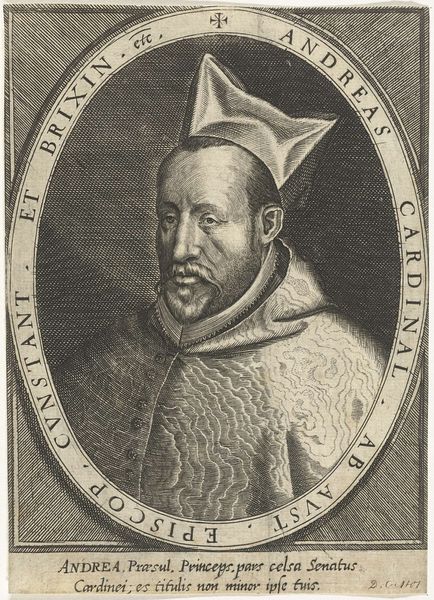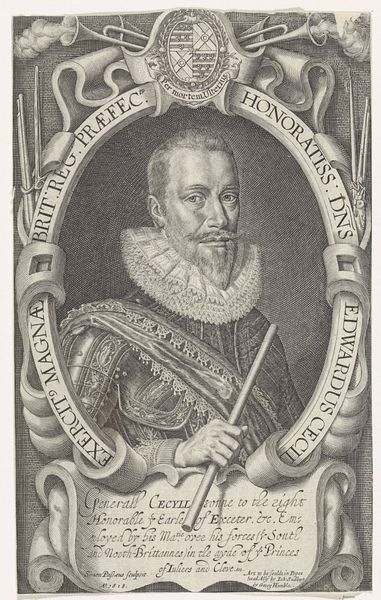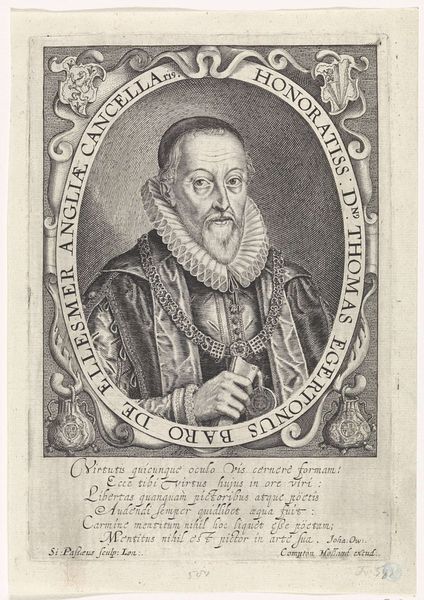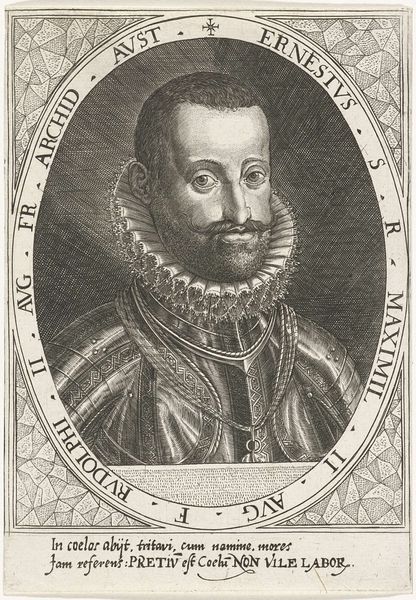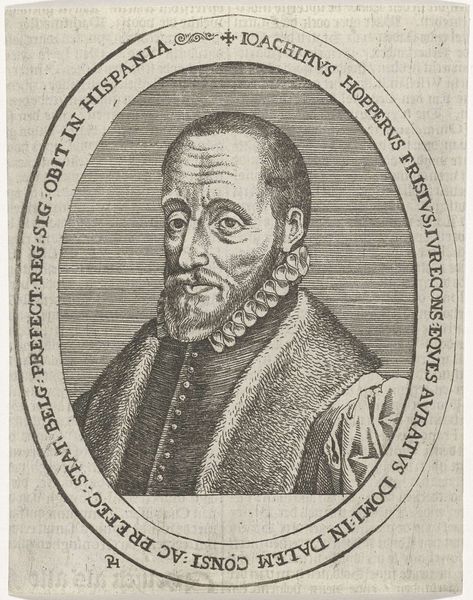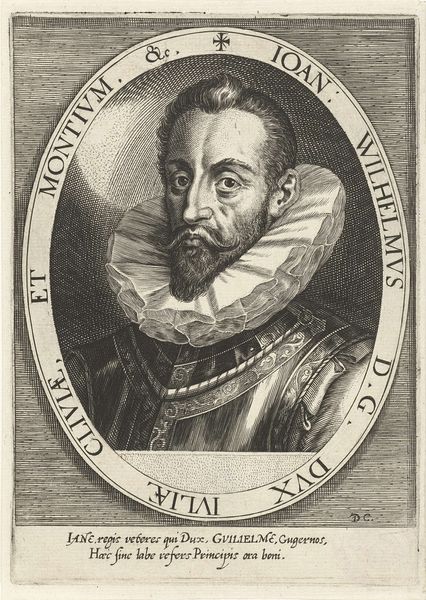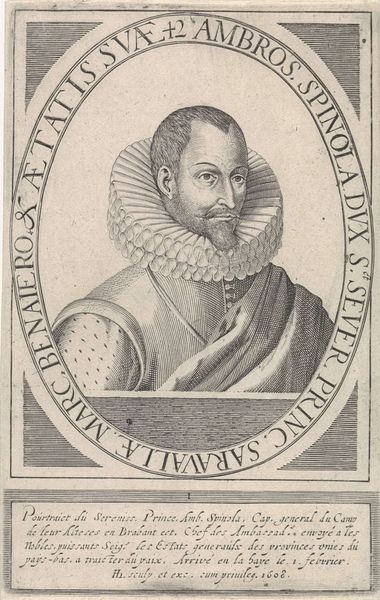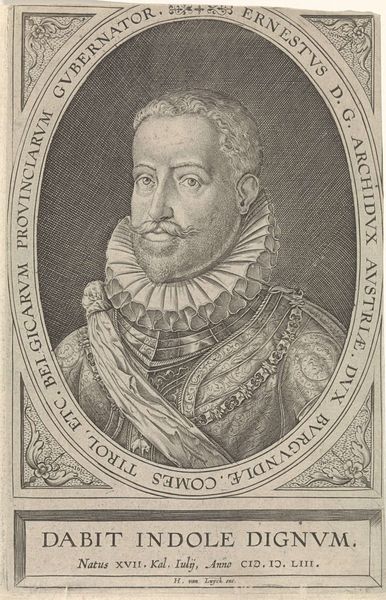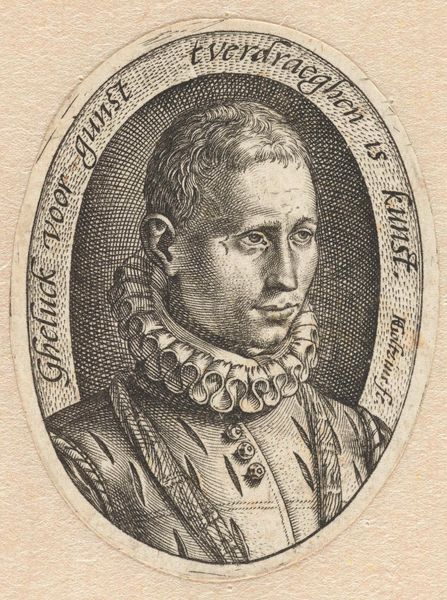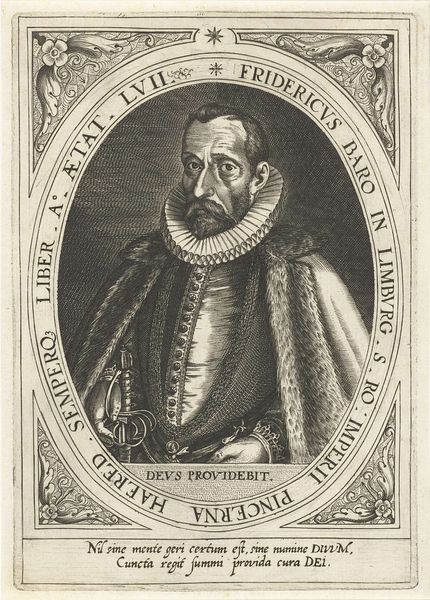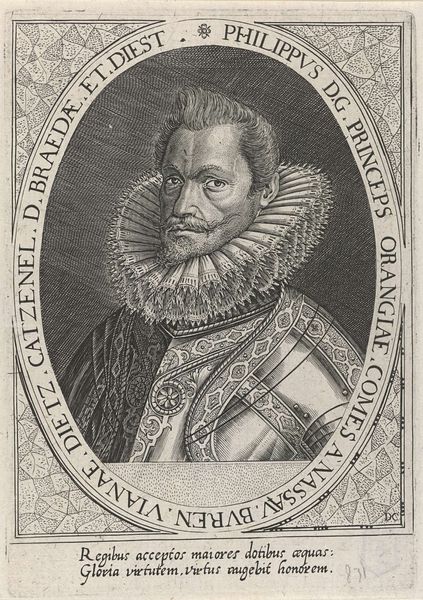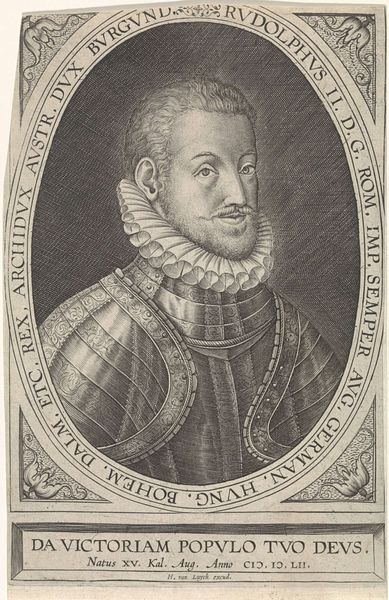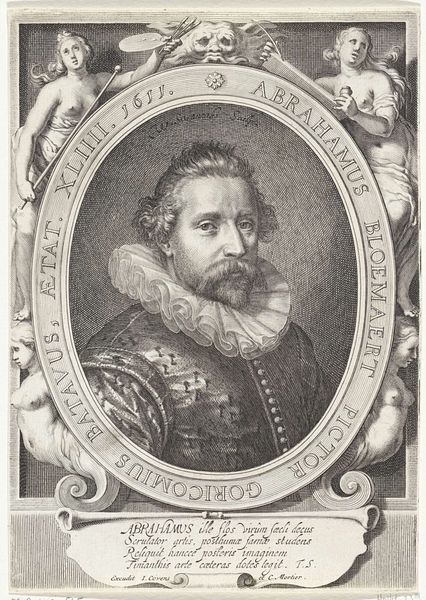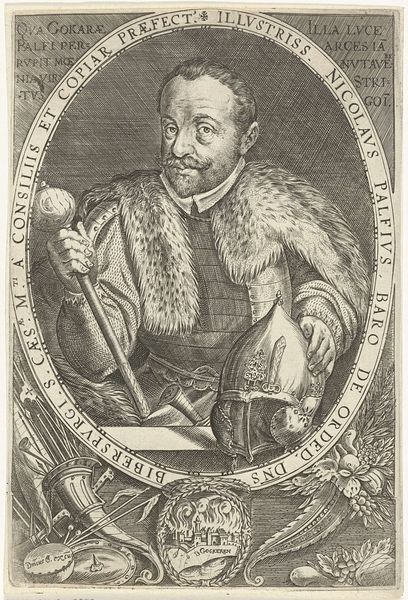
print, engraving
#
portrait
#
baroque
# print
#
northern-renaissance
#
engraving
Dimensions: height 183 mm, width 115 mm
Copyright: Rijks Museum: Open Domain
Curator: Here we have Simon van de Passe's "Portret van Henry Hobart", created between 1615 and 1622. It depicts Henry Hobart, a prominent Chief Justice of the time. What strikes you initially about this portrait? Editor: The level of detail in the engraving is astonishing, especially when you consider the time period. The textures in his garments— the crisp ruff, the weight of that heavy chain – you can almost feel the materiality of it all. Curator: Indeed, the rendering speaks volumes about Hobart's status and the craftsmanship of printmaking in the early 17th century. Engravings like these played a crucial role in disseminating images of power. Editor: Exactly, and the precision certainly communicates power. The materials here, copper and paper, become tools for propagating a very particular image, controlling the narrative around Hobart and his position. Curator: And the image is carefully constructed to that end. Consider the Latin inscription framing his likeness, emphasizing his titles and honours. This wasn't merely a representation of a man but an embodiment of his public role. It visually reinforced the social order. Editor: The controlled lines of the engraving further echo that sense of order. It’s almost as though Hobart himself is being manufactured, replicated for broader consumption. I wonder what this kind of mechanical reproduction did to ideas around authorship at the time? Curator: A pertinent question. The artist becomes, in some sense, an instrument of power themselves, reinforcing that very order we talked about by crafting such a detailed reproduction of someone holding power. Editor: This piece then speaks volumes about the process of making a man through images. It also makes one consider the labor invested in such a reproduction. How many prints would've been made? Curator: A key component to any study of power! It also lets us reflect on the long afterlife this image had within culture. We can use prints like this to consider changing perceptions of Henry Hobart, in tandem with larger movements. Editor: Ultimately, the lasting testament here lies in how material process reveals to us the construction of an image, both aesthetically and politically.
Comments
No comments
Be the first to comment and join the conversation on the ultimate creative platform.
